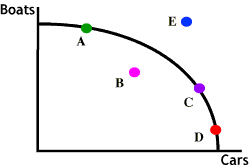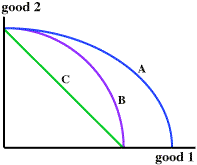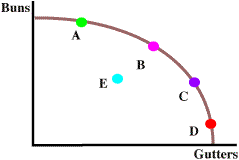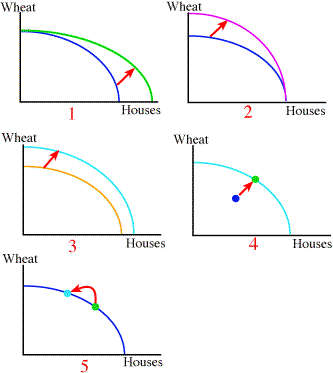- earned economic profits of $60,000.
- earned economic profits of $20,000.
- earned economic profits of $100,000.
- incurred economic losses of $20,000.
- there is not enough information to determine economic profit or loss.
- earned economic profits of $40,000.
- earned economic profits of $50,000.
- incurred economic losses of $80,000.
- earned economic profits of $10,000.
- earned economic profits of $6,000.

- A,B,C.
- A,C,D.
- B,D.
- E.
- B.
- A and C.
- C and D.
- any points which lie on the PPF as B are inefficient.
- none are necessarily preferred to point B.
- A, C and D.
- A.
- B.
- C.
- D.
- E.

- an increase in unemployment.
- an increase in employment.
- a change in preferences between goods 1 and 2.
- an improvement in the technology used in producing good 1.
- an improvement in the technology used in producing both goods.
- the opportunity cost of good 1 in terms of good 2 is constant on curve B, but is different at different points on curve C.
- the opportunity cost of good 1 in terms of good 2 is constant on C, but is different at different points on B.
- curve B implies that good 1 is always preferred to good 2.
- if all resources are used to produce good 2, then B implies more can be produced than on C.
- curve B implies more efficient production of both goods than C.

- A and B.
- B.
- B and C.
- C and D.
- all the points on the PPF since they are "efficient" and E is not.

- 1.
- 2.
- 3.
- 4.
- 5.
- 1.
- 2.
- 3.
- 4.
- 5.
- 1.
- 2.
- 3.
- 4.
- 5.